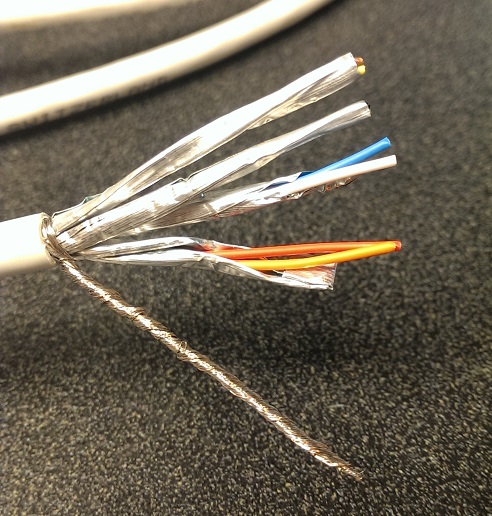We are planning on using Cat7A twisted pair cable for an application with which high bandwidth (~800MHz) analogue signals are being transferred over around about 3 metres.
At the moment the cable uses ARJ45 connectors (they are premade cables), so we have been using those on our prototype designs. However as we have four of these cables feeding in to a very small space, the connectors are simply too bulky. I've been looking for other ways of attaching the cable, however things like PCB mount splice terminals are not acceptable as they are not really designed for such high frequencies.
The best solution I can come up with at the moment is to solder the cables directly to a small well designed PCB which can then plug on to the main board using a decent edge connector (e.g. Samtec MEC1-EM or the like).
The trouble with doing this is that the cable is fully shielded with each pair having an individual foil shield which is made of Aluminium - in other words not easy to solder without nasty fluxes. The outer shield is a braided copper screen, so that is relatively easy to attach for mechanical strength.
So to my question - what would be the best method to go about attaching the cable to a PCB?
For reference, this is the internals of the cable with the foil stripped away in a couple of places to get an idea of what it looks like inside:
Soldering the twisted pair would be the cleanest method, but soldering the foil shields is not really possible. I wonder though if I even need to solder the shield as it will be attached at one end by the connectors, so it may actually perform better to leave the other end floating to minimise ground loops.
Alternatively, has anyone come across some alternate connectors for attaching either shielded twisted pair cables, or just their shields?




